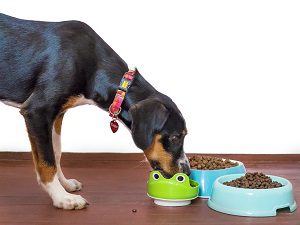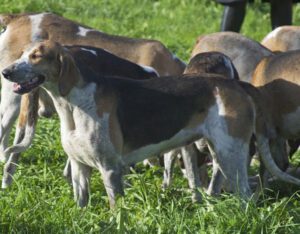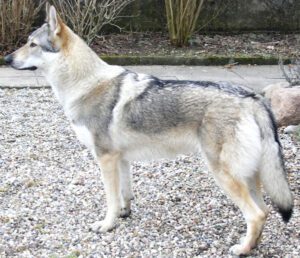The Brussels Griffon dog is a breed of toy dog. It is named for it’s city of origin: Brussels, Belgium. It is also known by some other names such as Griffon Bruxellois, Belgium Griffon, Petit Brabançon, Griffon Belge and Brabançon Griffon. It’s common nicknames are Griffon, Griff and Bruss.
The Griffon Bruxellois may refer to three different breeds, the Griffon Bruxellois, the Griffon Belge and the Petit Brabançon. Identical in standard except for coat and color differences, in some standards they are considered varieties of the same breed, much like Belgian Shepherd Dogs.
The Brussels Griffon dogs trace their roots back to Belgium, where small, terrier-like dogs were bred to hunt and kill vermin in stables, especially those of horse-drawn hansom cabs-the equivalent of today’s taxi – in the cities.
The breed as we know it today was created from several dog breeds including Affenpinscher, English Toy Spaniel and Pug. The first one (Affenpinscher) contributed the size and wiry coat texture. While the Toy Spaniel influence is seen in the large, expressive eyes, rounded head and upturned underjaw. The Put influence is seen in the smooth-coated variety of the Brussels Griffon dog.
These crosses eventually created a small dog with great rat-hunting abilities and an almost human-looking face. Over time, these cocky little dogs became popular as house pets for both noblemen and workers.
The Belgium breeders created a standard for the breed by 1883 (a written description of how the breed should look, and started entering them in dog shows).
Marie Henriette, Belgium’s queen and a dog enthusiast, fell in love with the little Brussels Griffon and began breeding them and promoting them in Europe and abroad. In 1889, the Club du Brussels Griffon dog was formed in Brussels with the smooth-coated variety being called the Griffon Brabancon.[1]
Both smooth-coated and rough-coated Brussels Griffons were exported to England in the early 1890s. The breed was admitted to the English Stud Book in 1898, and clubs formed to develop the breed.
The breed found it’s way to the United States around the same time. The first Brussels Griffons were registered with the AKC (American Kennel Club) in 1899, and were shown at the Westminster Kennel Club dog show. The AKC officially recognized the breed in 1900.
Brussels Griffon Dog Characteristics
The Brussels Griffon dogs are very beautiful, smaller sized breed with a sturdy frame. They have domed heads, short noses and an underbite. Their humal-like facial features are often likened to that of an Ewok.
The Brussels Griffon dogs come in two coat variants. One is wiry or rough type and another is smooth coat. Their hair can be red, black and tan, or black and reddish in color.
The short hair type requires little grooming, while the rough coat type requires weekly grooming attention.
Generally, breeders will dock tails and crop ears on puppies for sale. This practice is illegal in most of Europe and increasingly frowned on in the United States, but still practiced in some places.
The Brussels Griffon dogs are smaller sized dogs. Their average body height is between 9 and 11 inches at the withers. And their average live body weight is between 4 and 5 kg.[2]

Temperament
The Brussels Griffon dog is known to have a huge heart, and a strong desire to snuggle and be with it’s master. These dogs display a visible air of self-importance.
A Brussels Griffon dog should not be shy or aggressive, but they are very emotionally sensitive, and because of this, should be socialized carefully at a young age. They are also alert, inquisitive and interested in their surroundings.
These dogs tend to bond with one human more than others. In fact, they are very good with children provided they are not teased. They are not very patient but do love to play. They tend to get along well with other animals in the house, including cats, ferrets, and other dogs.
However, they can get into trouble because they have no concept of their own relative size and may attempt to dominate dogs much larger than themselves.
Lifespan
Average lifespan of the Brussels Griffon dog is between 12 and 15 years.
Feeding
How much a mature dog eats depends on it’s size, age, build, metabolism and activity level. Dogs are individuals, just like people, and they don’t all need the same amount of food.
The Brussels Griffon dogs are smaller in size, and they are very active. So, their diet should be formulated for a smaller sized breed with high exercise needs. Generally 1/4 to 1/2 cup of high-quality dry food a day will be enough for them. Although, you can consult with a vet in your area for better feeding recommendations.
Caring
The Brussels Griffons are housedogs. But But so long as they’re inside with the family, their small size makes them suited to any household, from city highrises to country estates. In either place they can impress you with their inborn rat-hunting skill.
They have a lot of energy and they need regular exercise to stay in shape. But they will do okay without a yard so long as they get walks or some other exercise everyday.
His intelligence and athletic ability make the Griffon a contender in dog sports such as agility, obedience, and even tracking, as long as you persuade him that it’s worthwhile.
Training must be fun, and positive reinforcement — rewarding your dog for getting it right, rather than punishing him for mistakes — is the only way to get cooperation from a Griffon. You can’t force a Griffon to do anything, but you can make him believe it’s his idea.
Health
The Brussels Griffon dogs are generally healthy. But like all other dog breeds, they are also prone to certain health conditions.
Their common health problems include eye problems, skin allergies, hip dysplasia and patella luxation. Always try to keep good contact with a vet in your area.
| Breed Name | Brussels Griffon |
| Other Names | Also known as Griffon Bruxellois, Belgium Griffon, Petit Brabançon, Griffon Belge and Brabançon Griffon. It’s common nicknames are Griffon, Griff and Bruss. |
| Breed Size | Small |
| Height | Between 9 and 11 inches at the withers |
| Weight | Between 4 and 5 kg |
| Good as pets | Yes |
| Climate Tolerance | All climates |
| Color | Red, black and tan, or black and reddish |
| Lifespan | Between 12 and 15 years |
| Good for children | Yes |
| Rarity | Common |
| Country of Origin | Belgium |






